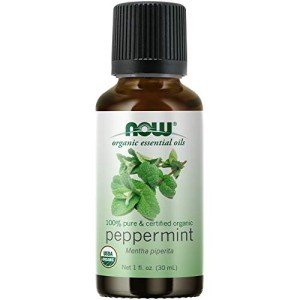Chemical Composition of Peppermint Essential Oil
Peppermint essential oil contains a wide variety of chemical compounds, many of which contribute to its distinctive aroma and therapeutic properties. The most prominent components include:
-
Menthol (30-55%): Menthol is the primary active compound in peppermint oil, responsible for its cooling sensation and characteristic minty fragrance. Menthol has a calming effect on the skin and can help relieve itching, irritation, and inflammation. It also acts as a natural analgesic, providing a soothing effect for sore muscles and tension.
-
Menthone (10-35%): Menthone contributes to peppermint oil’s minty, slightly herbaceous aroma and provides cooling and antiseptic effects. It can help cleanse and refresh the skin, reduce redness, and improve circulation.
-
Isomenthone (5-15%): Isomenthone is a structural isomer of menthone and shares similar therapeutic properties, including its cooling effects on the skin. It also has antimicrobial properties, contributing to peppermint oil’s ability to fight bacteria and other pathogens.
-
1,8-Cineole (Eucalyptol) (~2%): This compound is also found in eucalyptus oil and contributes to peppermint’s fresh, slightly woody aroma. It has anti-inflammatory, antimicrobial, and decongestant properties, making it useful for promoting healthy skin and relieving skin irritation.
-
Menthyl acetate (~1%): This ester contributes to peppermint’s smooth, sweet, and slightly fruity scent. Menthyl acetate is also thought to have mild anti-inflammatory properties.
-
Pulegone (~1%): A minor component of peppermint oil, pulegone has a strong minty odor and is believed to have some insect-repellent properties, although it must be used cautiously, as it can be toxic in large amounts.
Benefits of Peppermint Essential Oil in Handmade Soap
Peppermint essential oil offers a wide range of benefits when incorporated into handmade soap, making it a popular choice for soap makers. Here are some of the key benefits:
1. Invigorating and Energizing
The strong, refreshing aroma of peppermint essential oil is invigorating and can help boost energy levels, reduce mental fatigue, and promote alertness. It is often included in soaps meant for morning showers or products designed to invigorate the senses.
2. Cooling and Soothing
Menthol, the dominant compound in peppermint oil, provides a natural cooling sensation, making it ideal for soothing sore muscles or hot, irritated skin. It can also provide relief from skin conditions such as rashes, sunburn, and itching by cooling and calming the skin.
3. Cleansing and Refreshing
Peppermint oil has mild antiseptic and antibacterial properties, making it an excellent choice for cleansing the skin. It helps to eliminate bacteria that could contribute to acne or other skin infections, promoting a fresh, clear complexion.
4. Improves Circulation
Peppermint essential oil is known to stimulate circulation. When used in soap, it can help to increase blood flow to the skin, promoting healthy skin turnover and a more radiant complexion.
5. Treats Acne and Skin Blemishes
The antibacterial and antiseptic properties of peppermint oil make it effective for treating acne. It helps to unclog pores, reduce inflammation, and fight acne-causing bacteria. This makes peppermint-infused soaps ideal for people with oily or acne-prone skin.
Peppermint Essential Oil in Cosmetics
Peppermint oil is widely used in cosmetic products, including face creams, body lotions, lip balms, and even shampoos. The oil's cooling, cleansing, and skin-stimulating properties make it an excellent choice for various skincare and hair care applications.
1. Relieves Headaches and Tension
When applied to the temples or massaged into the scalp, peppermint essential oil can help relieve headaches and reduce tension. This is due to menthol's analgesic and muscle-relaxing properties, making it a popular ingredient in scalp treatments and massage oils.
2. Helps Combat Oily Skin
Peppermint oil can help balance sebum production in the skin, making it an excellent option for people with oily or combination skin. It can reduce excess oil on the skin’s surface, preventing clogged pores and breakouts, while also offering a refreshing, matte finish.
3. Tightens and Revitalizes Skin
Peppermint oil is known for its ability to stimulate blood flow and promote circulation. In cosmetic formulations, this can help firm and tighten the skin, giving it a more youthful appearance. It can also invigorate dull, tired skin, leaving it feeling refreshed and revitalized.
4. Natural Cooling for Sunburn Relief
The cooling effects of peppermint oil make it ideal for after-sun care. When diluted in a carrier oil or added to a soothing gel, peppermint oil can help calm sunburned skin, reduce redness, and provide a refreshing, cooling sensation.
5. Soothes Itchy Scalp and Dandruff
Peppermint oil is frequently used in shampoos and conditioners to relieve scalp irritation, itching, and dandruff. The oil’s ability to stimulate circulation can promote a healthy scalp environment, while its antimicrobial properties help keep the scalp free from fungal infections that contribute to dandruff.
How to Use Peppermint Essential Oil in Handmade Soap and Cosmetics
In Handmade Soap
Peppermint essential oil can be added to both cold-process and melt-and-pour soaps. For cold-process soap, the typical usage rate is around 0.5–1% of the total weight of oils in the recipe, depending on the desired strength of the fragrance. For melt-and-pour soap, the essential oil is added after the soap base has been melted and is then stirred in to ensure even distribution.
In soaps designed for sensitive skin, it’s important to use peppermint oil in moderation, as its strong cooling effect can cause irritation if used in high concentrations. Testing on a small patch of skin is always recommended before full use.
In Cosmetics
In skincare formulations, peppermint essential oil is typically diluted with a carrier oil (such as jojoba, coconut, or argan oil) to avoid irritation. A general guideline is to use 1-2% peppermint oil in facial products and up to 3% in body lotions or massage oils.
Peppermint oil can be added to face creams, body scrubs, lip balms, and even bath products. It can also be included in hair care products like shampoos, conditioners, and scalp treatments to invigorate and refresh the scalp.
How to Use Peppermint Essential Oil Safely
While peppermint essential oil is generally considered safe for topical use, it is important to dilute it properly with a carrier oil, such as coconut oil or jojoba oil, before applying it to the skin. Essential oils are potent and can cause skin irritation if used undiluted.
Pregnant women and those with delicate health conditions should consult with a healthcare professional before using essential oils. As with any essential oil, a patch test is recommended to check for potential skin reactions.
Conclusion
Peppermint essential oil is a powerhouse ingredient in handmade soap and cosmetics. Its invigorating aroma, cooling sensation, and wide array of skin benefits make it a popular choice in both skincare and personal care products. Whether you're looking to refresh your skin, reduce acne, soothe sore muscles, or simply enjoy the energizing effects of peppermint, this essential oil is an excellent addition to your natural beauty routine. Its combination of cleansing, cooling, and invigorating properties ensures that peppermint essential oil will continue to be a staple in cosmetic formulations and handcrafted soaps for years to come.







